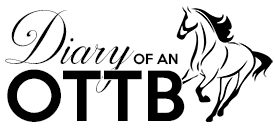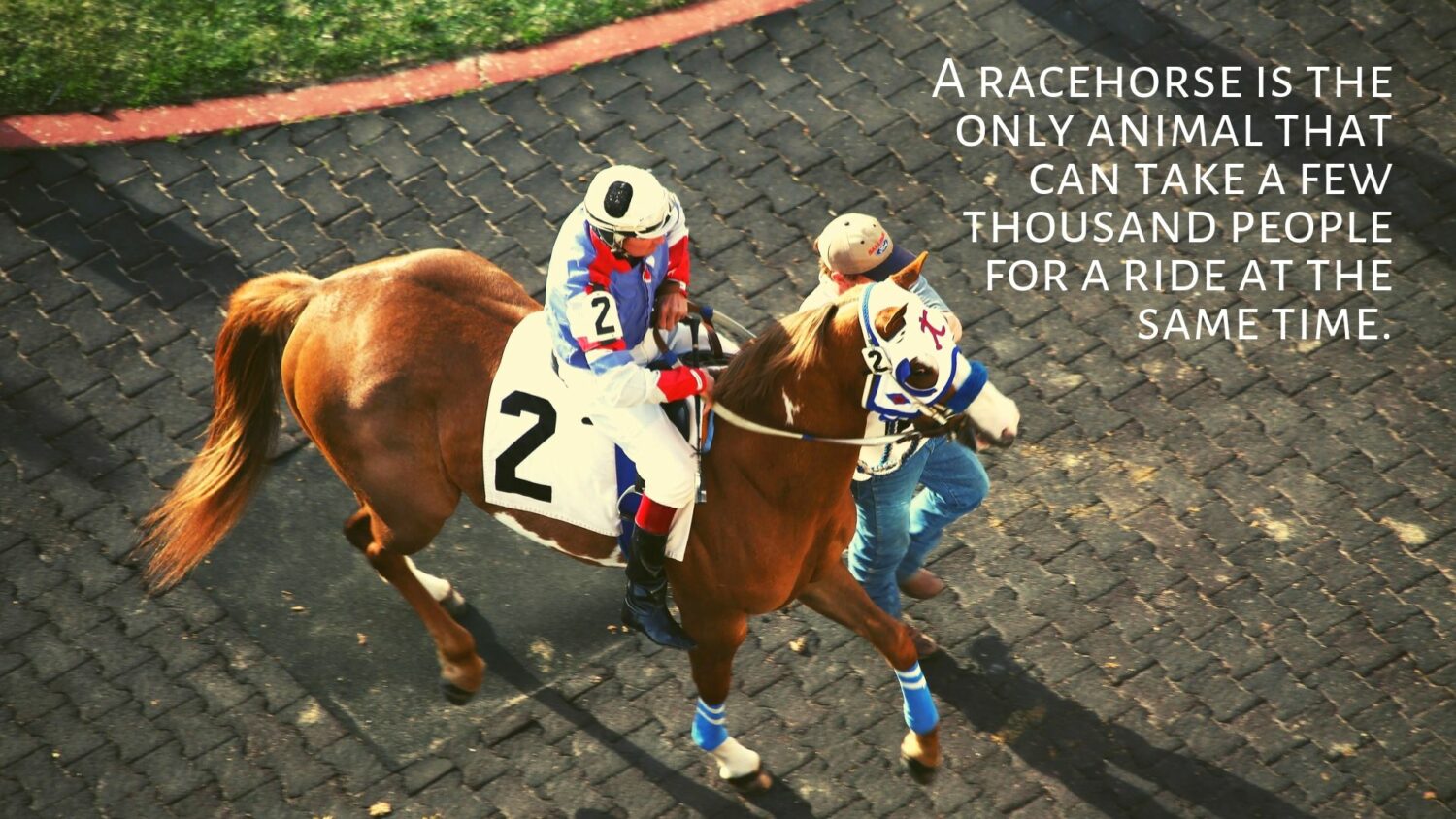Unless you’ve worked in the racing industry, the life of a horse at the track might be a bit of a mystery to the average person. What’s more difficult to gauge is how this routine and lifestyle translates to many racehorses’ second careers.
So what’s a typical day at the track like?
A 2017 Seattle Times article that detailed a typical day at Emerald Downs mentioned a few words that could best be used to summarize the atmosphere on the backside: passion, pain, and persistence. There’s also this 2 minute video below that’s pretty awesome.
Life in the business of horse racing is a challenging one and full of disappointment, especially when you consider how many Thoroughbreds are bred in a year, how few make it to the track for training, and even fewer will ever win a race. The threat of injury is ever present, heartbreak is constantly around the corner, and yet horses that win one of every five races are considered productive. Talk to anyone in the racing industry and they’ll tell you that while it’s a job, it’s also their life.
Daily Life at the Track
A typical day at the racetrack starts with the first grooms arriving, many before 4am, feeding and mucking stalls and tending to any injuries. From 6am for the next several hours, training begins. Whether the horses are being worked on the track for a few miles, jogging, or hand or hot walking, attached to a mechanical walker, the majority of their training day lasts until 11am or so when the horses are bathed, may have their legs wrapped for added protection, and are taken back to their stalls for a midday feed.
Yep, horses that live at the track get a lunch break too.
Once the horses have had a chance to eat their lunch, they’re usually hand or hot walked again for a few hours before being cooled out, bathed and groomed then returned to their stalls for the rest of the night. They’re usually fed around 6pm before the process starts all over again the next morning.
Early Years of Training
If this process sounds like a grueling one, that’s because it is. Champion racehorses aren’t produced by coddling — they’re trained and worked and then trained some more for that single purpose of hopefully someday winning a race.
More than just the daily routine, the process of training a racehorse is a lengthy one that starts for many as a yearling in preparation for races as a two and three-year-old and beyond. The first step in this process is getting the yearlings acclimated with a saddle, bit, and rider. Once the horses have gotten a good grip on this, they’ll be ready to start building muscle and bone density with regular work and exercise.
On the track you’ll hear exercise riders refer to four different training speeds: a jog, another term for a trot, a gallop, a two-minute lick or two minute mile, and a breeze, which is essentially running at full speed. Working from the jog up, racehorses are taught how to steer, take the bit, and how to switch leads, both in groups and alone on the track or small ring.
You can learn more about how yearlings are started under saddle in this video by Godolphin that documents a 10 week training cycle.
It’s this initial foundation and work ethic that allows many Thoroughbreds to go on to have successful second careers. While an OTTB’s training might not meet the needs of every rider immediately off the track, every horse that has been on the track has also been prepared for work regardless of their age.
How Life On the Track Can Affect An OTTBs Second Career
Even if a horse only raced once, that one race was preceded with hours and hours of training to prepare. In other words, horses coming from the track often have a good deal of training and riding already under their belts… or girths.
This prior training can be a great asset or obstacle during retraining for a second career, but that’s the point of the retraining process.
While not every horse’s experience on the track is the same, a few things can be generally stated about how track life affects OTTBs:
- They’re used to a work routine. Some of the most difficult periods I’ve had retraining my own OTTB have been when I’ve been the least committed. Getting on a schedule and developing a consistent routine helps reinforce training messages and also allows younger, fitter, horses the opportunity to blow off some steam outside a stall or paddock.
- They’ve been trailered around and lived next to other horses. Moving from track to track is part of the job for racehorses so regardless of your horse’s personal opinions on the matter they’ve almost certainly been trailered around or relocated before.
- Yes, they’ve been trained to go fast but no, they won’t always want to gallop away with you. Some retired racehorses, despite their previous professional ambitions, can be just plain lazy. Not all have aspirations of breaking speed barriers just because they were formerly on the track.
- They’ve demonstrated an ability to learn a task, such as racing. Thoroughbreds have an uncanny ability to learn new things, provided that they’re taught in a way they can understand. That’s the struggle of any horse training.
Depending on the horse and the trainer, a lot of this previous training experience can be a huge help in terms of kicking off a second career. It’s not exactly a headstart in the training process but it can help gauge your own understanding of what your OTTBs life was like before. It’s your job as a rider, trainer, or owner, to work through the challenges as they arise so you can better establish a trusting relationship and create a willing partner.
4
